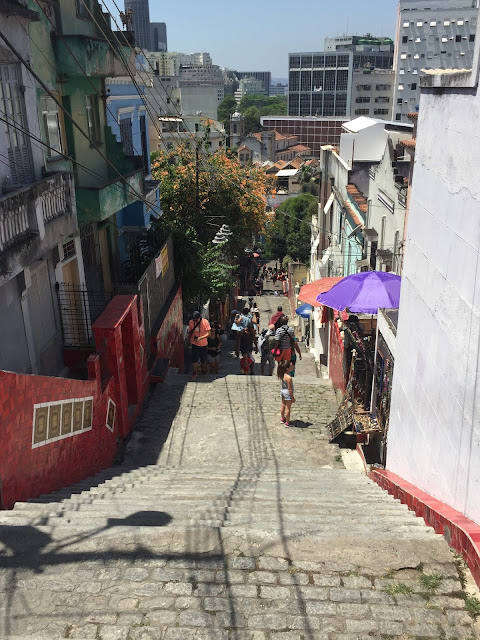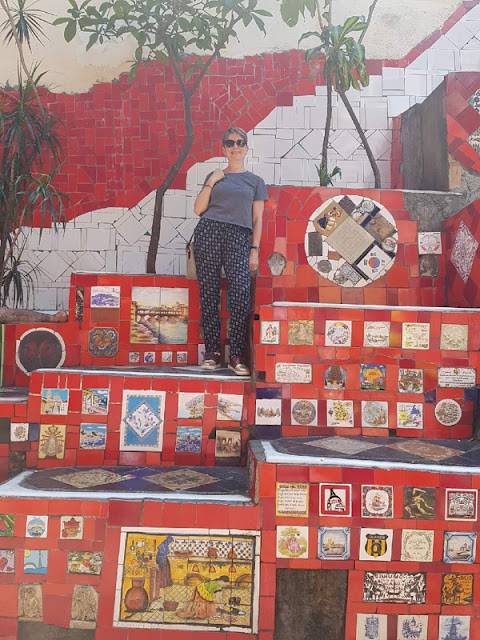We also considered, based on my daughter's suggestion, a visit to Parque de Ruinas, a small public park and an art gallery nest around an old ruined mansion that provided the best views over the city;the other suggestion was to catch an old fashioned Santa Teresa tram which runs from the city deep into the neighbourhood and you can get on it and wander off at any time to explore whenever something interesting catches your eye.
That was the plan but once we shared it with the hotel's concierge and asked him for directions, it become obvious that our plan had a couple of flaws . With a grim expression he explained that due to the dangerous situation inside the one of the favelas (Portugese word for a slum) situated in the area of one of our points of interest (Santa Teresa), the hotel strongly recommends its guests to avoid it. On top of that, turned out that there was not a quick and direct way to get there, the nearest train station was within 20 minutes by car.
Our enthusiasm not much dampened by these unexpected obstacles, we decided that we will not adhere to our original plan but will approach it with caution. And with that resolution in mind, we hailed a cab.
The ride in the subway was uneventful and soon we emerged from the underground and into the hot steamy streets of Santa Teresa and walked to the Steps admiring the graffiti on the neighbouring walls.
Finally after more then 20 years in the making, the Steps, his labour of love as he called them, were completed. Not soon after, he was found dead, lying on the famous steps.
We spent quite some time walking up and down the Steps, looking closely on the patterns of the tiles, apparently over 2000, that covered them. Their motifs as wide ranging as the artist's imagination.
On the way back, we spotted an old viaduct with a old-fashioned open yellow tram running on top of it. After asking around, we found a ticket office and boarded it. It rattled along the old train racks, climbing up deeper into the neighbourhood.
"THE STEPS WERE HIS CONTRIBUTION
TO THE BRAZILIAN PEOPLE"
While we were on the train, a very unusual architectural structure in a conical shape caught our attention, so as soon as we disembarked, we headed towards it.Neither my husband nor I have ever seen a religious edifice build in such an unorthodox fashion and inside it looked as extraordinary.
And of course, you can't stay in Rio and not go to the beach, at least once. Even if your hotel comes with the private stretch of sand, you should venture outside the ropes and mingle with the locals and we planned to spend the first half of our last day in Rio doing just that.
As for the afternoon, we wanted to do a bit of shopping followed by a nice quiet dinner but where not sure where to go and asked the concierge. He suggested that we should go Leblon, an upscale area of the city known for its trendy beach, hip restaurants and bars and a vast array of small designer boutiques as well as a big and modern shopping mall. Actually, we were not really interested in a big shopping mall since they all look almost identical no matter where you are but I did however, come across a small boutique where I bought a couple of pieces of clothing which I will model for you at some time in the future. After a delicious dinner at a French bistro and a stroll around the block, we took a taxi back to the hotel. It was a perfect day to end our stay in this exciting city!!!
Early the next morning, we were on the plane to Buenos Aires.






















